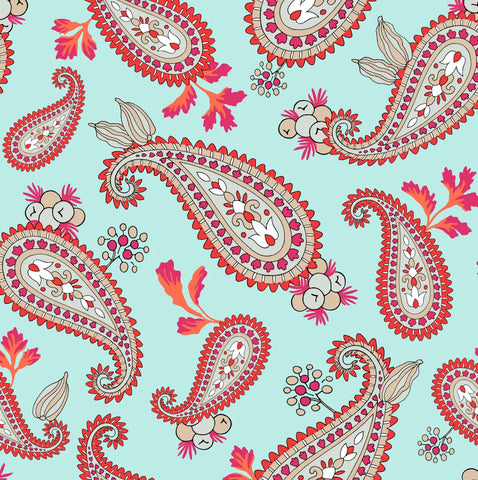
The Timeless Elegance: Unravelling the History of the Paisley Pattern
Did you know Buddies Gin has their very own Paisley Pattern designed by the talented artist Patrick Moriarty, Paisley Power?
But what is the history of the famous pattern know worldwide?
Introduction:
From fashion runways to home decor, the Paisley pattern has remained a beloved and timeless design for centuries. Its intricate and mesmerizing motifs have adorned fabrics, accessories, and even architecture, captivating the hearts of many. In this blog post, we will delve into the rich history of the Paisley pattern, tracing its origins, evolution, and enduring popularity.
Origins in Ancient Persia:
The Paisley pattern finds its roots in ancient Persia, modern-day Iran, dating back over 2,000 years. Originally known as "boteh" or "buta," the design was inspired by the shape of a droplet or a budding flower. The symbol held deep cultural significance, representing fertility, growth, and eternity.
Spread to the Indian Subcontinent:
During the Mughal Empire in the 16th century, the Paisley pattern made its way to the Indian subcontinent. Indian artisans embraced the design, incorporating it into their textiles, shawls, and garments. The intricate motifs were meticulously handcrafted using techniques such as block printing, embroidery, and weaving, showcasing the exceptional craftsmanship of the region.
European Influence and Popularity:
In the 18th and 19th centuries, the Paisley pattern gained immense popularity in Europe. The East India Company's trade routes brought luxurious Indian textiles, including shawls adorned with the Paisley design, to the Western world. These exquisite shawls became highly sought-after fashion accessories among the elite, symbolizing wealth and sophistication.
Scottish Connection:
Scotland played a significant role in the Paisley pattern's history. Paisley, a town in Scotland, became a prominent centre for textile production during the Industrial Revolution. Scottish weavers skillfully reproduced the intricate Paisley motifs, incorporating them into their tartans, kilts, and other fabrics. The town's association with the pattern eventually led to its name.
The Swinging Sixties and Psychedelic Era:
The Paisley pattern experienced a resurgence in the 1960s during the era of counterculture and psychedelia. The vibrant and swirling Paisley motifs perfectly embodied the free-spirited and unconventional nature of the time. It adorned clothing, album covers, and even psychedelic posters, becoming an iconic symbol of the era.
Modern Interpretations:
Today, the Paisley pattern continues to captivate designers and fashion enthusiasts alike. Its versatility allows it to be incorporated into various styles, from bohemian and vintage to contemporary and high fashion. Designers often experiment with colour palettes, scale, and placement, breathing new life into this timeless pattern.
Conclusion:
The Paisley pattern's journey from ancient Persia to its global popularity is a testament to its enduring allure. Its intricate motifs and rich history have made it a beloved design choice for centuries. Whether adorning fabrics, accessories, or even architectural elements, the Paisley pattern continues to enchant and inspire, proving that true elegance stands the test of time.
So, the next time you spot a Paisley pattern, take a moment to appreciate the centuries of artistry and cultural significance woven into its intricate motifs.
Discover the Paisley Pattern on our bottles:
Cheers Buddies!




